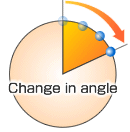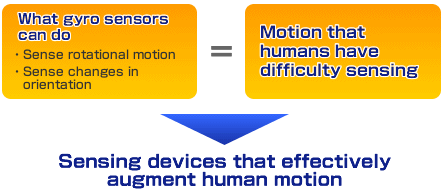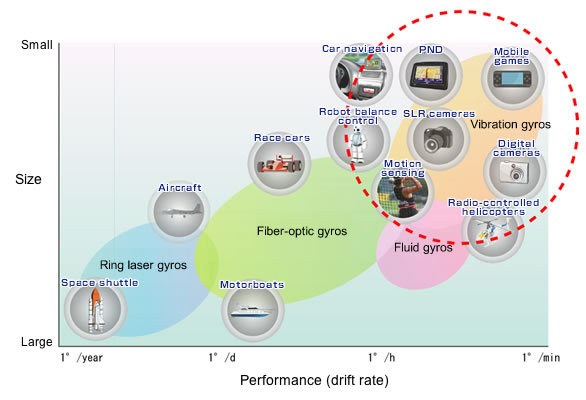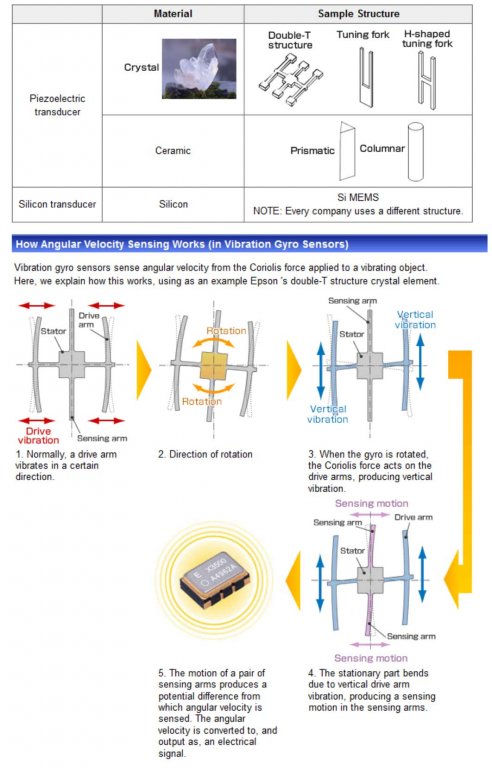I used information from a few internet sources to create the following. Just FYI only - please feel free to add or change.
GYROSCOPES - GENERAL
Gyroscopes/Gyros are a critical component used in RC Helicopter flying. They are also known as angular rate sensors or angular velocity sensors. They primarily sense changes in Angular velocity
Angular velocity

Angular velocity is the change in rotational angle per unit of time.
Angular velocity is generally expressed in deg/s (degrees per second).

Gyro Sensor Types
Gyro sensors come in a variety of types. Here, different types are plotted by size and performance.

In recent years vibration gyro sensors have found their way into many different devices most obvious to many people is the mobile phone and controls on console games like the WII.
This is going to be a growing market which is good for RC Helicopters. Future gyroscope applications include more vehicle safety devices, Robotics and feedback and many applications not yet thought of.
Different Types of vibration Gyro Sensors
Gyro sensors detect the change in angular velocity because of the Coriolis force being applied to the vibrating element.
Vibration gyro sensors sense angular velocity from the Coriolis force (http://en.wikipedia.org/wiki/Coriolis_effect ) being applied to a vibrating element. For this reason, the accuracy with which angular velocity is measured on a gyroscope differs significantly depending on element material and structural differences.
The other important factor is the type of electronics used to interpret the sensor output. For example if your gyro is able to sense change at 2150 degrees per second, you need electronics which has a clock speed/resolution (usually measured in bits) fast enough to accurately respond to sensors output. This depends on the CPU used, the design and many other factors. The fastest I have seen a RC Helicopter gyro run is around 3 revolutions per second.
Elements to consider when building quality Gyros
There are a number of factors that are required to produce a gyro which is fast and highly accurate.
Manufacturers use a variety of materials and structures to try and achieve compact, high-accuracy gyro sensors that have the characteristics we desire. I think however that many RC Helicopter Gyro Manufacturers would use the gyroscopes from other devices and not create their own. The electronics and software/housings would be custom however. I could stand to be corrected on this one.
Things which we desire in a gyro
· Response to movement
. Stability (the better the response to movement the better the stability)
· Resistance to temperature change
· Resistance to vibration
· Simple setup procedure
· Light weight
· Crash resistance
Shown below are some structures and materials used in Gyros.

It would be Interesting to compare the types of sensors, materials and electronics that different RC Helicopter Gyros use. Perhaps then we could start to create a quality comparison chart. So many people claim their gyro is the best and these claims are very subjective - it would be nice to put some figures behind the claims. Which gyro is really the best quality? IE which has the fastest processor, the best sensor, the better construction etc. I think we should explore this area in depth. What do you think?
Info How A Gyro Works
Discussion in 'Other Brands' started by smakmeharder, Dec 30, 2014.
Comments
Discussion in 'Other Brands' started by smakmeharder, Dec 30, 2014.
 Like x 2
Like x 2
